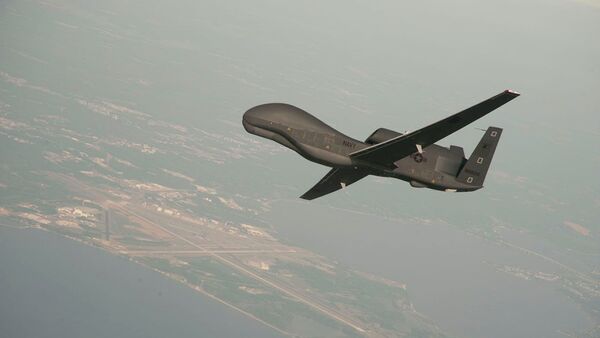NATO’s new drone capabilities will allow the alliance to peek hundreds of kilometers into foreign countries’ hinterlands, alliance Secretary-General Jens Stoltenberg has said.
“[The drones] will fly over NATO territory. But they will be able to see what is happening far beyond the borders of neighbouring countries, and will provide us with a much better understanding of what is happening on the other side of the border,” Stoltenberg said, speaking to Norwegian tabloid Verdens Gang.
The drone type the NATO chief was referring to is the Global Hawk, a $220 million apiece high-altitude remotely-piloted surveillance aircraft produced by US defence giant Northrop Grumman. Verdens Gang notes that these aircraft can remain airborne for up to 30 hours at a time, with their radar and onboard sensors allowing them to determine what’s going on in a 200 km radius from an altitude of 18 km.
Stoltenberg boasted that these new drones, part of NATO’s new ‘Alliance Ground Surveillance’ command, will give the alliance a unique advantage over both Russia and China. He added that the US was “the only country that has anything like this.”
Two upgraded Global Hawk drones are presently undergoing testing in Sicily, Italy, with three more expected to be delivered to the country by year’s end. Altogether, the alliance has purchased 10 drones.
NATO’s new drone command is expected to be fully up and running by 2022. Once operational, the system’s surveillance images will be made available to all 29 members of the alliance.
The system is separate from US surveillance operations, carried out on a regular basis by US Air Force and Navy drones along Russia’s borders in the Baltic, in the Black Sea off Crimea and Krasnodar, and off the Syrian coast. Russian air defences regularly monitor, target and track hundreds of NATO aircraft operating close to the border, and occasionally scramble fighter jets to escort foreign military aircraft away from Russian airspace.
Moscow has repeatedly condemned US and NATO drone flights and bomber drills near its borders, saying such behaviour stokes tensions. The alliance has so far ignored these objections.
Iran’s air defence forces recently demonstrated what can happen to the Western alliance’s cutting-edge spy drones if they illegally cross into a country’s airspace, shooting down a $220 million Global Hawk drone in June after it entered Iranian airspace.



